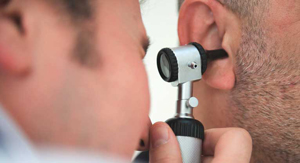Washington, Apr 21: A team of US researchers has revealed that the traditional clinical hearing tests often fail to diagnose patients with a common form of inner ear damage, which otherwise might be detected by some behavioural tests.
 According to researchers, the reason why some forms of hearing loss may go un-recognised in the clinic is that hearing involves a complex partnership between the ear and the brain and the central auditory system can compensate for significant damage to the inner ear by turning up its volume control, partially overcoming the deficiency.
According to researchers, the reason why some forms of hearing loss may go un-recognised in the clinic is that hearing involves a complex partnership between the ear and the brain and the central auditory system can compensate for significant damage to the inner ear by turning up its volume control, partially overcoming the deficiency.
This type of "hidden hearing loss" paradoxically presents itself as essentially normal hearing in the clinic, where audiograms -- the gold-standard for measuring hearing thresholds -- are typically conducted in a quiet room.
"You can have tremendous damage to inner hair cells in the ear that transmit information to the brain and still have a normal audiogram," said lead study author Richard Salvi from University at Buffalo.
"But people with this type of damage have difficulty in hearing in certain situations, like hearing speech in a noisy room. Their thresholds appears normal," Salvi added. About 95 percent of sound input to the brain comes from the ear's inner hair cells.
"Ear damage reduces the signal that goes the brain and it results trouble in hearing, but that's not what's happening here, because the brain "has a central gain control, like a radio, the listener can turn up the volume control to better hear a distant station." Salvi stated.
The sound is converted to neural activity by the inner hair cells in the auditory part of the ear, called the cochlea.
Sound-evoked neural activity then travels from the cochlea to the auditory nerve and into the central auditory pathway of the brain. For people with inner hair cell loss, sound is less faithfully converted to neural activity in the cochlea.
It is not clear how many people might have this type of hearing loss, but Salvi noted in the journal Frontiers in Neuroscience that it is a common complaint to have difficulty hearing in noisy environments as people get older.






Comments
Add new comment